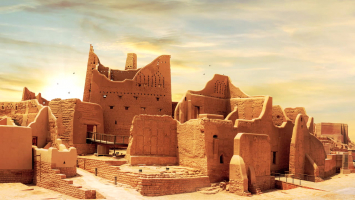Top 7 Most Beautiful Historical Sites in San Marino
San Marino is a small mountainous microstate in northern Italy. It is one of the world's oldest republics, with much of its historic architecture still ... read more...standing. Below, Toplist makes a list of the most beautiful historical sites in San Marino.
-
The city of San Marino is nestled at the foot of three fortifications that cap the long slope of Mount Titano. Rocca Guaita, built in the 11th century, is the first and oldest of the strongholds, and also one of the most beautiful historical sites in San Marino. It was used as a prison for a period and was rebuilt multiple times for various purposes before taking on its current appearance during the 15th-century struggle between San Marino and the House of Malatesta. The tower requires some climbing to reach, but its lofty perch's panoramic views of the surrounding landscape make it well worth the effort.
Rebuilt in the second half of the fifteenth century, it was covered with a sloping roof in the 16 century. Its name Rocca Guaita comes from its sturdy walls, which are defended by a double round wall (the outer one with battlements and towers severed at the corners), which shelters people during sieges. Until October 1970, several of the rooms were utilized as a prison.
The Baroque stone crest, which can be seen on the entrance door and dates back to 1600, was once part of the former Public Palace. The Bell Tower and the Pen Tower, which were completed a few centuries later, are the only structures on the inner wall. A gatehouse from 1481 guards the upper door, which can only be accessed via a ladder.
Location: Via Salita alla Rocca, San Marino
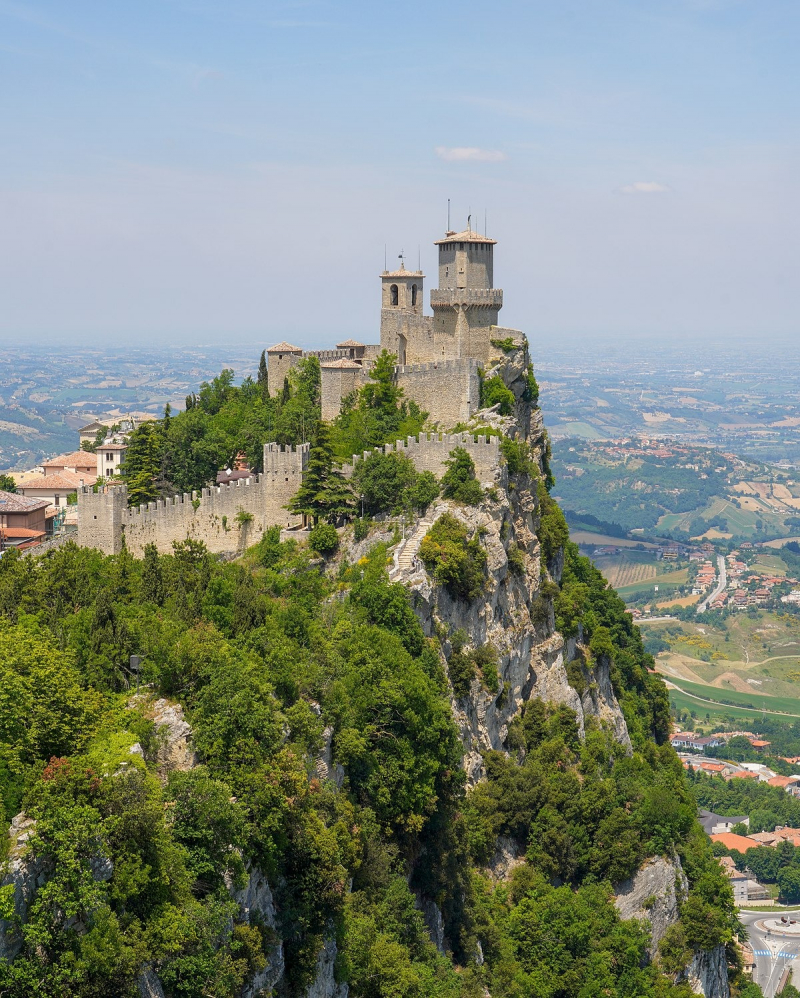
Photo: Wikimedia Commons 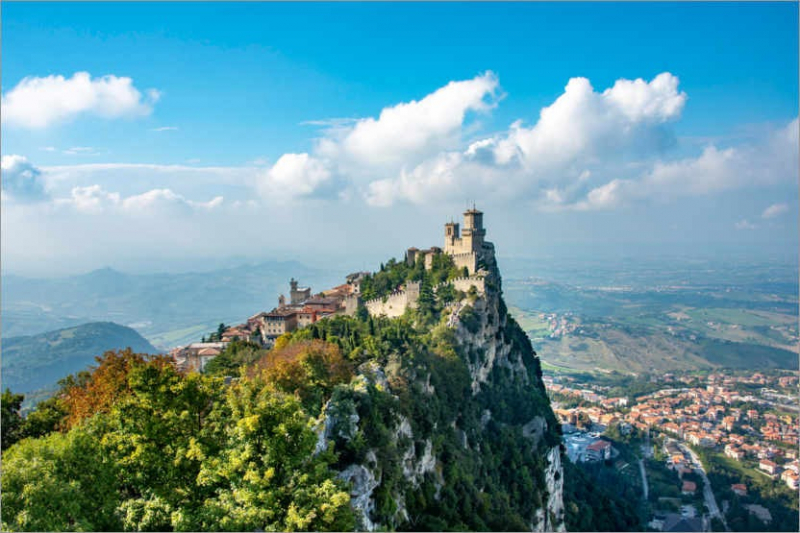
Photo: Poster lounge -
Mount Titano, at 739 meters, is the highest point for miles and offers amazing views from any of its three towers. The views span northwest to the Apennines, east to Rimini's coast, and across the Adriatic to Croatia's Dalmatian coast on a clear day. In 2008, the combined title "San Marino Historic Centre and Mount Titano" was recognized as a UNESCO World Heritage Site.
The vertebrate fossils found on the slopes of Mount Titano are predominantly aquatic in origin because this granite was originally beneath the sea in its current location. On Monte Titano, fossils of numerous fish, particularly shark teeth, have been unearthed, with many dating to the Miocene epoch. The discovery of a whale fossil is the most significant.
Its lengthy ridge is punctuated by three castles, the highest of which is Rocca Cesta. The Passo Delle Streghe, or Witches' Passage, connects them via a paved walkway. The mountain summit is dotted with booths offering snacks, drinks, and souvenirs, giving it a carnival-like atmosphere. Rocca Cesta is an antique armaments museum containing tens of thousands of weapons, including swords, knives, and crossbows, as well as early firearms and some strange experiments, such as a dagger gun from 1730. The three towers, which appear on the San Marino flag and coat of arms, are part of a UNESCO World Heritage Site that also contains the ancient town.
Address: Via Salita alla Rocca, San Marino
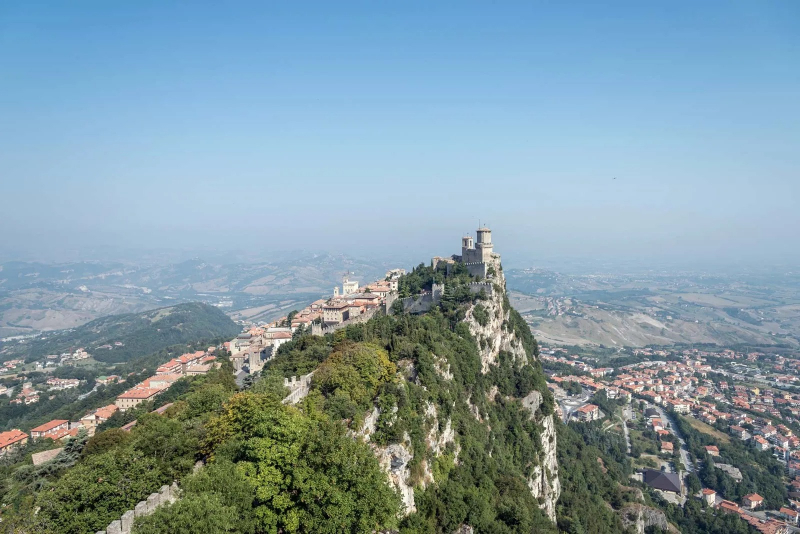
Photo: Britannica Source: Unesco -
The late-nineteenth-century neo-Gothic Government House (Palazzo Pubblico), with its square crenelated tower, was designed by architect Francesco Azzurri and constructed of stone quarried from Mount Titano. After a century of service, it was deemed hazardous by today's standards, necessitating a lengthy restoration project. Gae Aulenti, an internationally renowned architect, finished the intervention on September 30, 1996.
The exterior is adorned with the Republic's and its four municipalities' coats of arms, and an interior staircase leads to the Council Hall on the top floor. Battlements atop a series of corbels crown the main part of the structure. The battlements and corbels on the clock tower above are also part of this layout. The overall design is reminiscent of Florence's Palazzo Vecchio, albeit on a much smaller scale.
The Guardie di Rocca changes guard in a colorful ceremony regularly throughout the day, making Piazza della Liberta one of the most beautiful historical sites in San Marino. Their outfits, which include a dark green double-breasted jacket with white braid, red slacks with a green stripe, red pompom hats, and white gaiters, ensure that everyone gets wonderful shots of the event.
Adress: Piazza della Liberta, San Marino Città
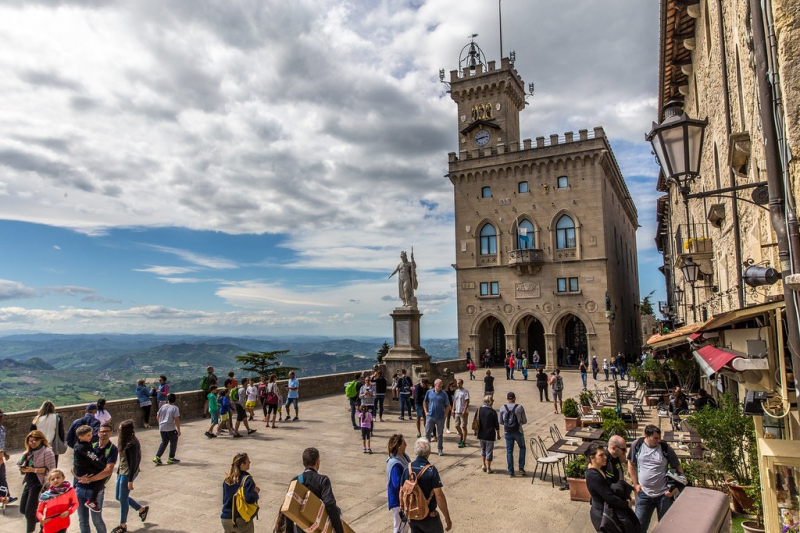
Photo: Flickr 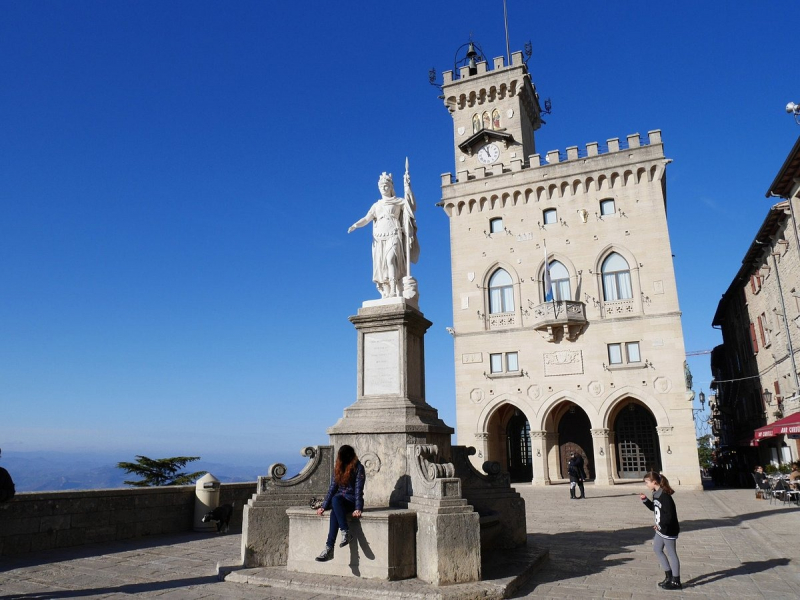
Photo: Trip advisor -
Basilica di San Marino - a Neo-classical basilica was built on the foundations of a fourth-century Romanesque church dedicated to San Marino (St. Marinus) that had been abandoned in the early nineteenth century. While the country has a unique dominance of old Christian religious buildings, the basilica is San Marino's primary church. It is located on Piazzale Domus Plebis, near the Church of St. Peter, in the city's northeastern outskirts. On August 29, 1982, Pope John Paul II paid a visit to the basilica, blessing the church and the relics of San Marino's deacon.
With a long nave and two side aisles lined with altars, the interior in Basilica di San Marino is in traditional basilica design. The sculptures and paintings on the seven altars are worth seeing, and the high altar features a Tadolini-sculpted statue of St. Marinus. Relics of St. Marino under the altar were discovered on March 3, 1586, and some were transferred to the island of Rab (Croatia), the saint's birthplace, on January 28, 1595. To the right of the altar is a silver and gold reliquary bust dated September 2, 1602. A modest shrine dedicated to Mary Magdelene and a painting by Elisabetta Sirani may be found in the right aisle.
Address: Piazza Domus Plebis, San Marino Città
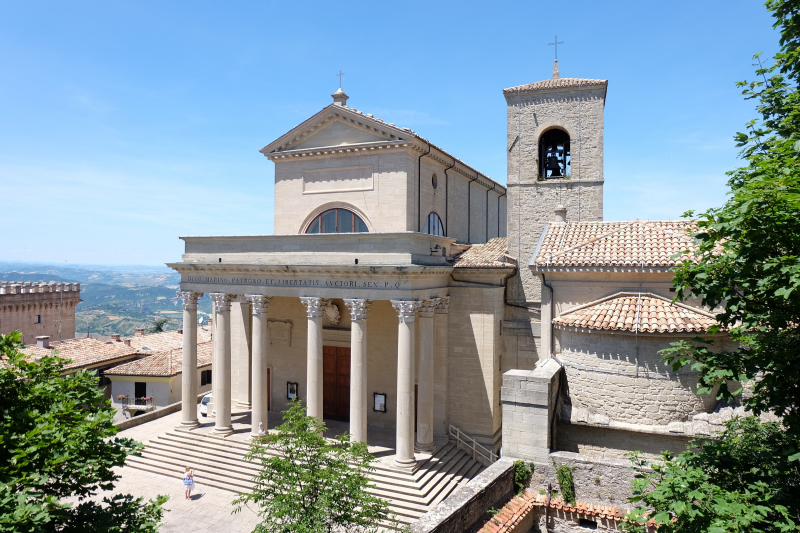
Photo: Wikipedia 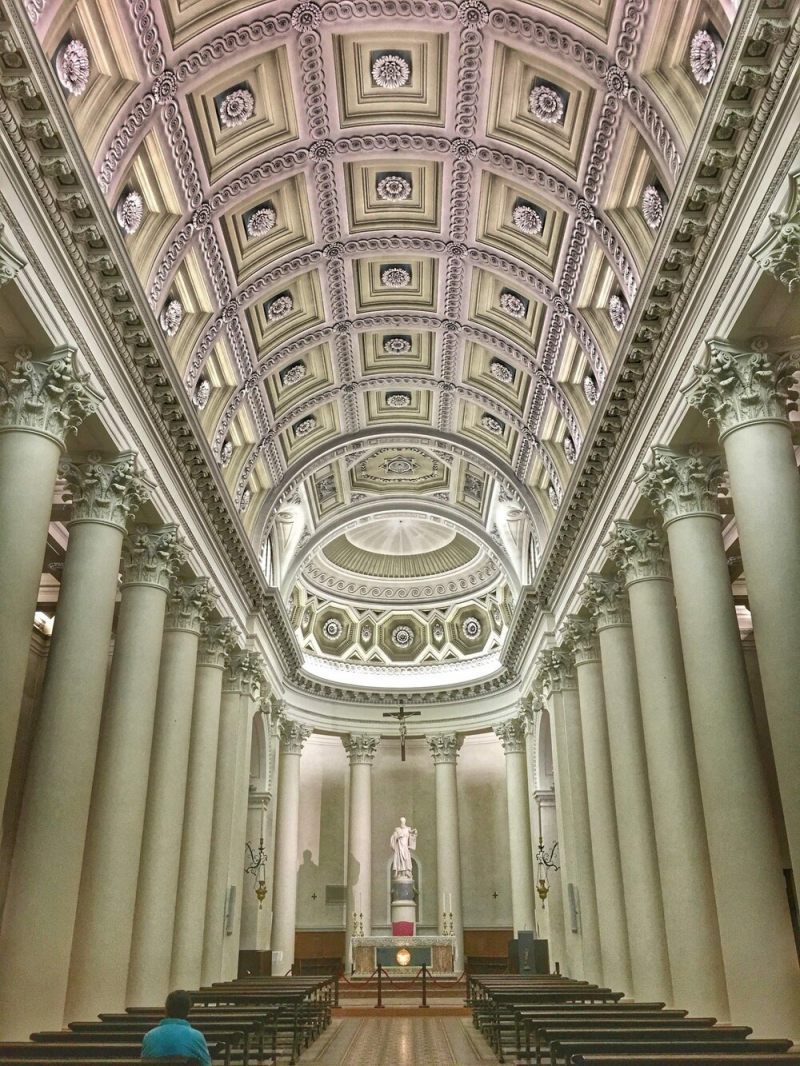
Photo: Attitude driven adventure -
The Museo di Stato - an outstanding museum, housed in the old Palazzo Pergami Belluzzi, displays archaeological exhibits ranging from Neolithic through Etruscan and Roman findings. Egyptian antiquities, Byzantine icons, 17th-century paintings, and antique San Marino coins are among the ancient art collections, which are not limited to the Italian peninsula.
Many of the roughly 5,000 pieces in the museum were donated in the 19th century from private collections of Italian intellectuals and politicians who wanted to express their respect for the tiny country. The "Tanaccia" votive bronzes and Domagnano's gold fibula have unique significance. Both exhibits were part of an Ostrogoth princess's burial gear, which was buried approximately 500 AD. Michele Gambono, Baccio Bandinelli, Tiburzio Passerotti, and Bernardo Strozzi are among the artists represented in the gallery. A collection of San Marinese coins and medals from 1864 to 1937 is featured in another exhibit.
The Museo di Stato is open from 9 am to 5 pm. The entrance price is € 6,50 for two Museums to choose from First Tower, Second Tower, St. Francis Museum, State Museum, National Gallery of Modern and Contemporary Art, and Public Palace* only if it welcomes visitors.
Address: Piazzetta del Titano 1, San Marino Città
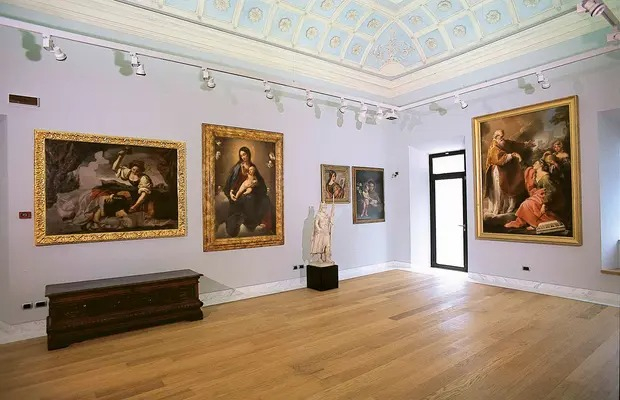
Photo: Minube 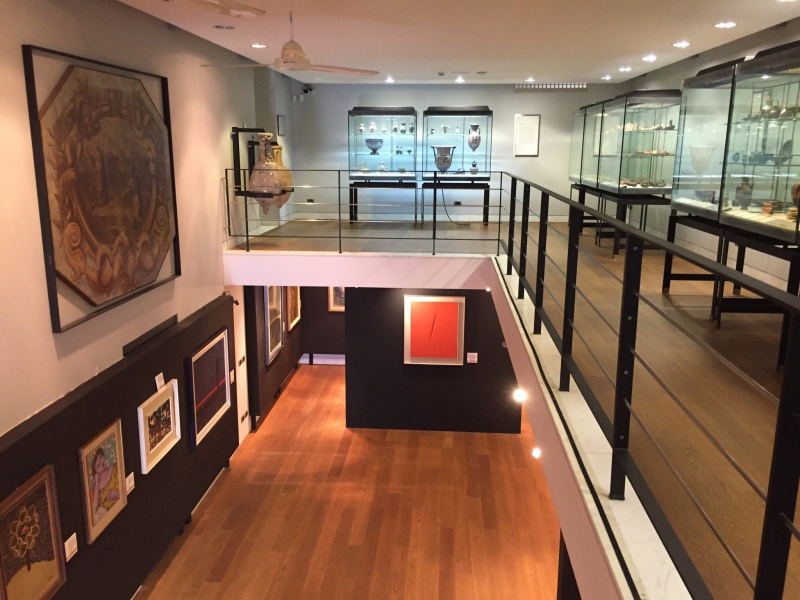
Photo: San Marino -
The least visited and southernmost of San Marino's three defensive towers that summit the peaks of Mount Titano is Montale Tower (Terza Torre). However, it is still of the most beautiful historical sites in San Marino. Located on the highest point of Monte Titano, it was built in the 14th century to provide better protection against possible invasion by the Italian family that ruled over Rimini, the Malatesta Family; however, it was also used as a prison at one point, which was most likely its original purpose. The entrance door is 7 meters (23 feet) above the ground indicates that it was built to be used as a prison, as the architecture for such structures at the time was only designed for prisons.
During the fight with the House of Malatesta in the 17th century, the tower was crucial in preserving San Marino. Today Montale Tower often shows San Marino’s national flag, coat of arms, and one-cent coin.
Montale Tower, unlike Guaita and Cesta Towers, is a single tower rather than a castle-like complex. Although it is not open to the public, you can go close enough to get a sense of its massive size. It takes roughly ten minutes to walk from Cesta Tower to Montale Tower. All three of Mount Titano's towers are connected by a trail.
Address: 47890, San Marino
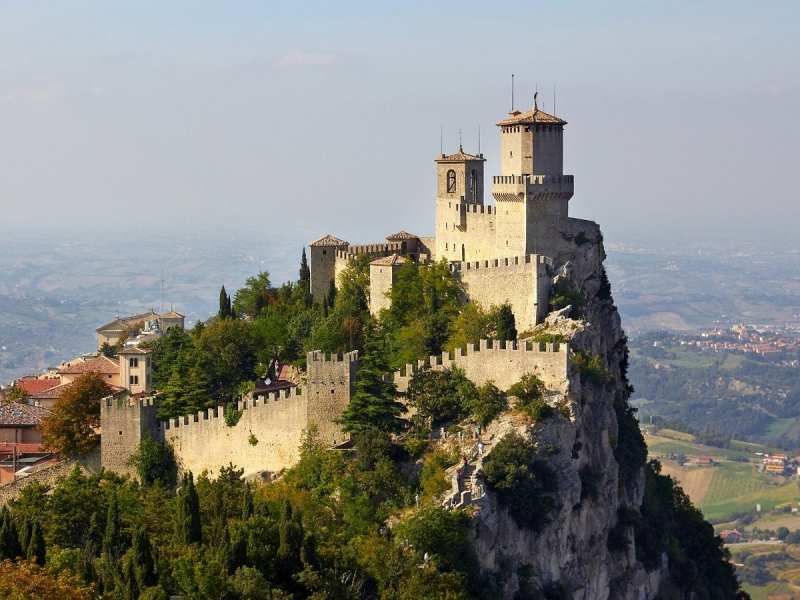
Photo: Trip advisor 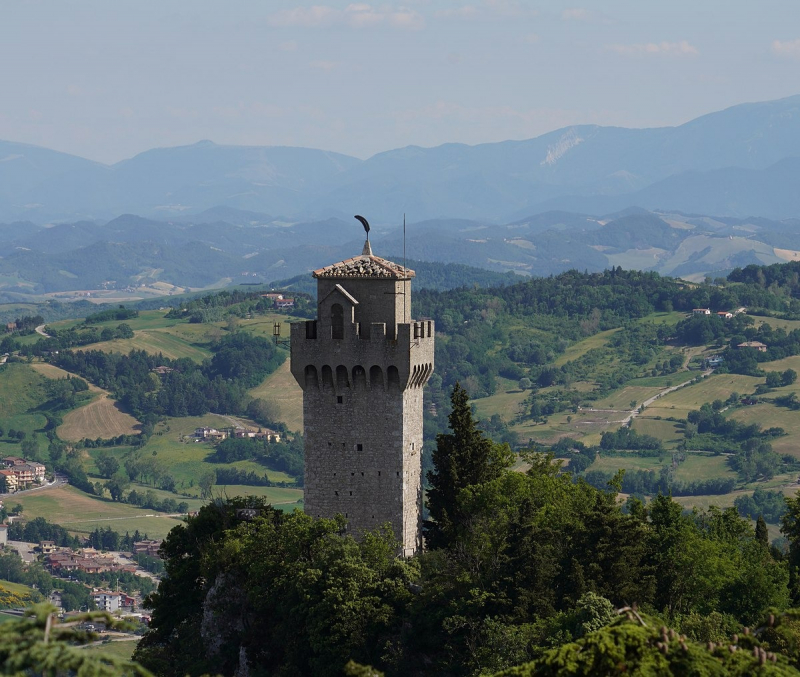
Photo: Wikipedia -
The Church of San Quirino (Chiesa di San Quirino) and the Capuchin Fathers' Monastery (Convento dei Frati Cappuccini) are located in San Marino's historic center on Monte Titano, on a tiny square in the street Paolo 3.
In remembrance of Fabiano da Monte's failed effort to take the city on June 4, 1543, the Franciscan Capuchin Church of St. Quirin convent was built in 1549 on the remains of an earlier chapel dedicated to St. Quirinus. The feast of the Saint was commemorated on June 4th. Three chapels and a sacristy were later constructed to the left.
A large stone stairway leads to a portico with five arches supported by monolithic columns, providing access to the Church. A column monument by Edward Colamarino, St. Francis (1928), is at the Church's entrance on the square. The interior of the Church of San Quirino is simple and strict. The altar of wood walnut is a striking example of a Capuchin altar, dating from the 16th and 17th centuries and designed by Liberato de Macerata, a monk. From the rear entrance of the Church, you can get access to a small monastery with a stone wall and a rainwater tank.
Address: Via Paolo III 27, City of San Marino 47890 San Marino
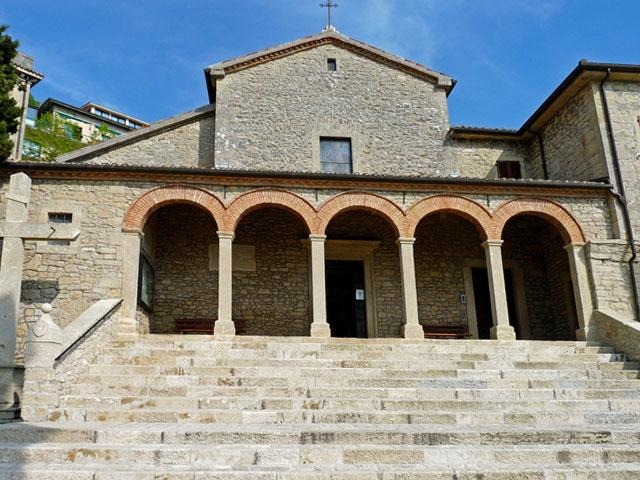
Photo: San Marino 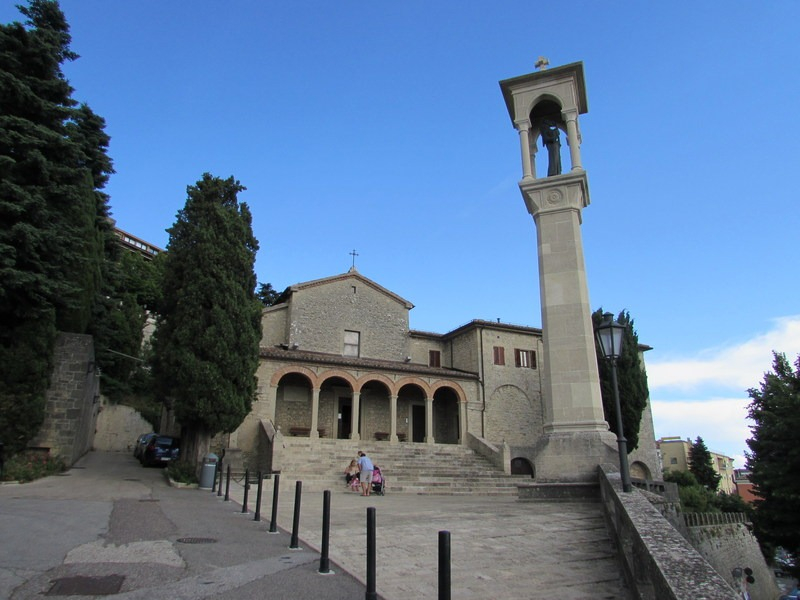
Photo: iziTravel



























